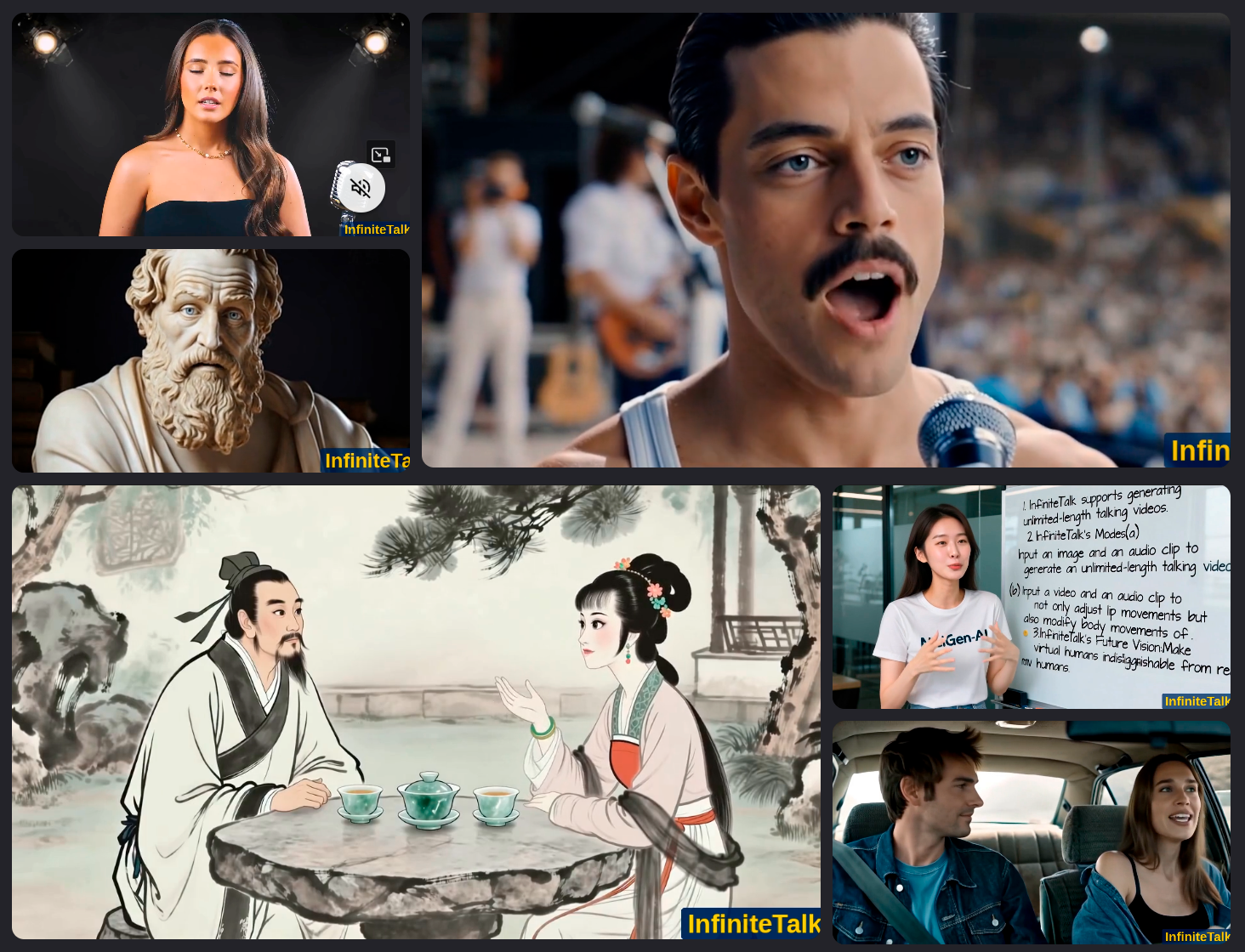InfiniteTalk | Unlimited talking videos from one image

Share this post:
InfiniteTalk | unlimited talking videos from one image
InfiniteTalk is a talking avatar system that treats speech, identity, and body language as one performance rather than three separate gadgets taped together. Give it a single portrait and a voice track or feed it a source video with replacement audio. The model produces long sequences that keep faces stable, eyes alive, and heads moving with the rhythm of the voice. It also preserves the background and camera motion of the original plate when you run it in video to video mode, which is the difference between a floating head and something that feels staged. In practice this lets a small team create a presentable presenter in minutes, dub a segment without re shooting, or build a localized version that plays cleanly in another language. The win is not a magic shortcut. It is a smoother path from idea to watchable clip, with fewer restarts and fewer tells that break the illusion.
For filmmakers and editors the pitch is simple. When a scene depends on a person speaking, you need more than lip sync. You need posture that matches intent, breathing that fits the phrase, and micro movements that tell the viewer a human is thinking while they talk. InfiniteTalk leans into that by driving full body and facial motion from audio features, so emotional tone bleeds into the animation the way it does on set. Use it to rough in hosted segments, educational shorts, explainers, and long form updates where a consistent on camera presence matters. For dubbing you can keep the original shot, guide the target language performance with the new audio, and avoid the stiff look that often appears when only the mouth is animated. None of this removes the need for direction or taste. It gives you a faster loop to find a take that plays and to fix lines that land flat.
In practice the workflow is friendly. The repository ships runnable code, weights, a Gradio demo, and ComfyUI nodes, so you can test in a browser, wire it into a node graph, or batch runs from Python. Start with a short portrait test to get a feel for pacing and identity fidelity. Then move to longer clips using streaming or chunked settings so memory use stays steady across minutes rather than seconds. Keep inputs clean. Good lighting, a sharp face, and audio without heavy noise produce the most stable results. Save seeds, configuration files, and version numbers for each run so your editor can reproduce a pass or request a small change without starting over. When you dub existing footage, match room tone and reverb in the audio before generation so the motion you get already sits in the space of the shot.
Licensing needs your attention. The GitHub repository lists Apache 2.0, which is permissive and often compatible with commercial use. The project page also includes a clear note that some source materials and some generated content are for academic use only and that commercial use is not permitted for those parts. Treat that statement as binding. Read the model card and the repository license side by side, and if you plan paid distribution, ask legal to review your exact workflow. Clear likeness rights for any real person you depict, even if you only aimed at a generic look. If you are building a branded character, lock voice permissions and usage scope in writing, including territories and term. Good paperwork is what keeps a clever demo from turning into a delivery problem.
Sources
- Official project page: https://meigen-ai.github.io/InfiniteTalk/
- GitHub repository and license: https://github.com/MeiGen-AI/InfiniteTalk
- Hugging Face model card and files: https://huggingface.co/MeiGen-AI/InfiniteTalk



